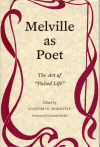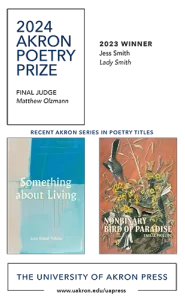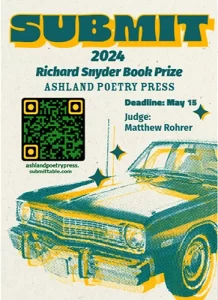Melville as Poet
Call me inspired. Most audiences come to know Herman Melville through Moby-Dick and Billy Budd, Sailor—deep, complex narratives that swell with metaphor and allegory. Both have entered the classical Americanist canon of literature thanks in large part to the early twentieth-century “Melville revival” within academia. Melville’s writing, however, extends well past the White Whale, and for the latter half of his literary career, his publication efforts and creative energy focused on his poetry. In recent decades, scholarly interest has turned to Melville’s canon of poetry as a window into American history and the understood role of a poet. (“[Melville’s] pained ironic view of his position as poetry weighed upon him.”) Melville as Poet: The Art of “Pulsed Life” (a bit of an odd title, but better than Melville: More than Moby) explores the breadth and depth of Melville’s poetry through its emphasis on the history, narrative, and imagery of a unique, careful, and lyrical American poet.
Call me inspired. Most audiences come to know Herman Melville through Moby-Dick and Billy Budd, Sailor—deep, complex narratives that swell with metaphor and allegory. Both have entered the classical Americanist canon of literature thanks in large part to the early twentieth-century “Melville revival” within academia. Melville’s writing, however, extends well past the White Whale, and for the latter half of his literary career, his publication efforts and creative energy focused on his poetry. In recent decades, scholarly interest has turned to Melville’s canon of poetry as a window into American history and the understood role of a poet. (“[Melville’s] pained ironic view of his position as poetry weighed upon him.”) Melville as Poet: The Art of “Pulsed Life” (a bit of an odd title, but better than Melville: More than Moby) explores the breadth and depth of Melville’s poetry through its emphasis on the history, narrative, and imagery of a unique, careful, and lyrical American poet.
Melville’s poetry carries many similarities to his larger projects of narrative prose. The style in his poetry is unmistakable as it builds allegory upon allegory and complexity upon complexity. The poems are puzzles of meter, meaning, voice, and rhyme that juxtapose history and then-contemporary events. This use of allegory allows his readers to unpack events (from his pilgrimage to Jerusalem in Clarel to his own account of Civil War experiences in Battle-Pieces) using history as an allegorical window where events and interpretation of events are stacked like transparent panes, refracting Melville’s lyrical irony back to the reader.
Melville as Poet is an extremely detailed, well-researched, and technical compilation of essays from a variety of expert perspectives. Arranged roughly in chronological order of the poetry’s publication, from Melville’s Civil War poems to his work of Timoleon, Etc., each essay works to parse various aspects of the poetry, providing the reader a glimpse of the subtle complexities of Melville’s historical voice. The most interesting, and unexpected, dimension—shown consistently throughout the essays—is the poet’s inexorable commitment to the power of imagery.
In Battle-Pieces, author Mary Bercaw Edwards analyzes Melville’s treatment of the most famous naval conflict of the American Civil War—the battle between the Monitor and the Merrimack. Melville’s “A Utilitarian View of the Monitor’s Fight” and “The Cumberland” place the reader immediately in the battle (“The story’s known”) but still utilize commonly recognized symbolic tropes of sunrise and sunset, water and baptismal resurrection, and unfurling banners to make sense of the battle. Interestingly, Bercaw Edwards claims that Melville’s battle pieces do more than merely use image and allegory for their own sakes—Melville, instead, tells of metallic, harsh battles through “mechanized” sounding poems to parallel the mechanics and machinery of each conflict. Imagery, allegory, and metaphor are present, but deeply buried—they are tools and means rather than ends, as in “The Cumberland”:
She warred and sunk. There’s no denying
That she was ended—quelled;
And yet her flag above her fate is flying,
As when it swelled
Unswallowed by the swallowing sea.
Many of the poems in Battle-Pieces, however, do contain more overt imagery as they are interpolations of events captured through then-contemporary paintings. “The Coming Storm,” for example, focuses on the emotional state of Edwin Booth, the owner of Sanford Robinson Gifford’s 1863 painting A Coming Storm and brother to John Wilkes Booth. In “Pictorial Intertexts for Battle-Pieces,” Dennis Berthold argues:
Had Melville not identified the painting and its owner, readers would be unable to tell that this poem, itself, was based on that painting. . . . Melville’s aim is introspection, not imitation, and he mentions the source of his ruminations only to let readers know that art can inspire reflections far beyond its representational surface. . . . “The Coming Storm” evokes emotions blunted by the thud of relentless newspaper coverage of a brother’s base deed and well-deserved death.
In “The Coming Storm,” Melville offers:
All feeling hearts must feel for him
Who felt this picture. Presage dim—
Dim inklings from the shadowy sphere
Fixed him and fascinate here.
Berthold’s essay acts as a guide for the reader—juxtaposing painting with poem and exploring the puzzling space between the two historically-inspired artistic moments.
Melville as Poet: The Art of “Pulsed Life” is by no means an easy read—it is technical, difficult, and packed with information and a wide spectrum of authorial expertise. In many ways, it assumes a certain level of familiarity with Melville, his life, and his prose. However, editor Sanford Marovitz does an amazing job of corralling and organizing the essays into a very understandable chronological arrangement, where analyses from one author easily lead the reader into the next aspect of Melville’s work. Melville as Poet is clearly a significant work to move Melvillian conversation past Moby and into Americanist poetical traditions. Here, Melville’s poetry comes into its own—no longer orphaned in the shadow of his larger narratives.





